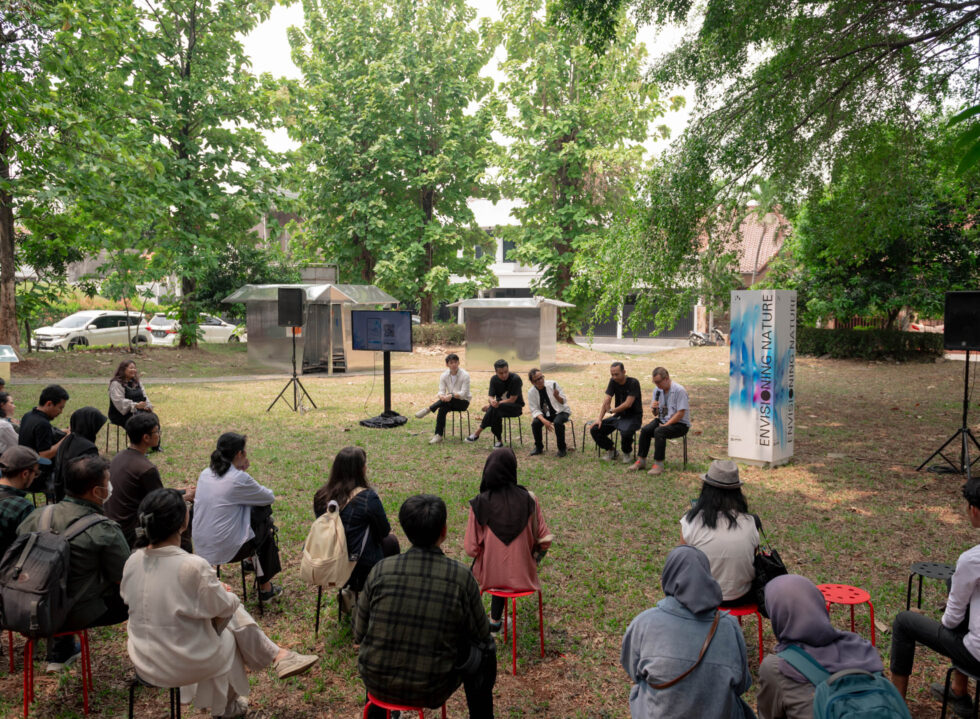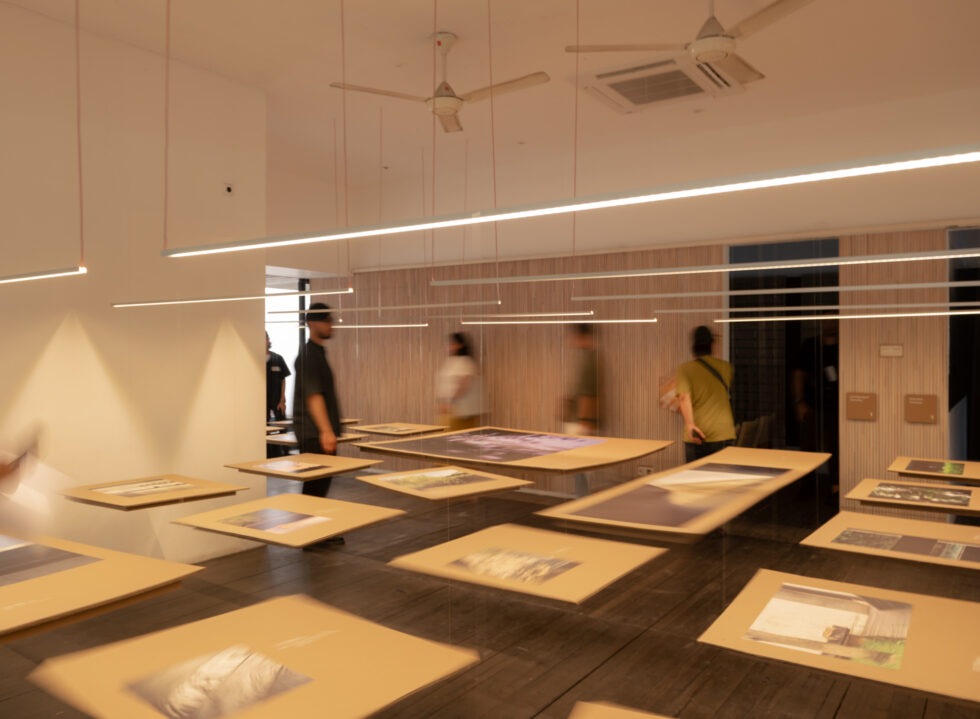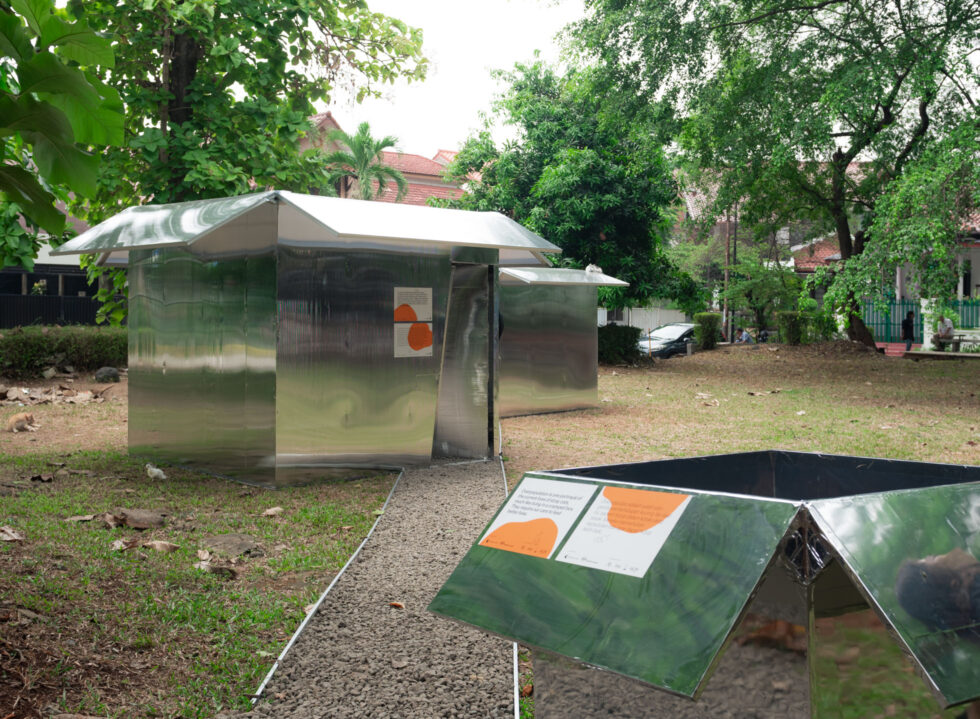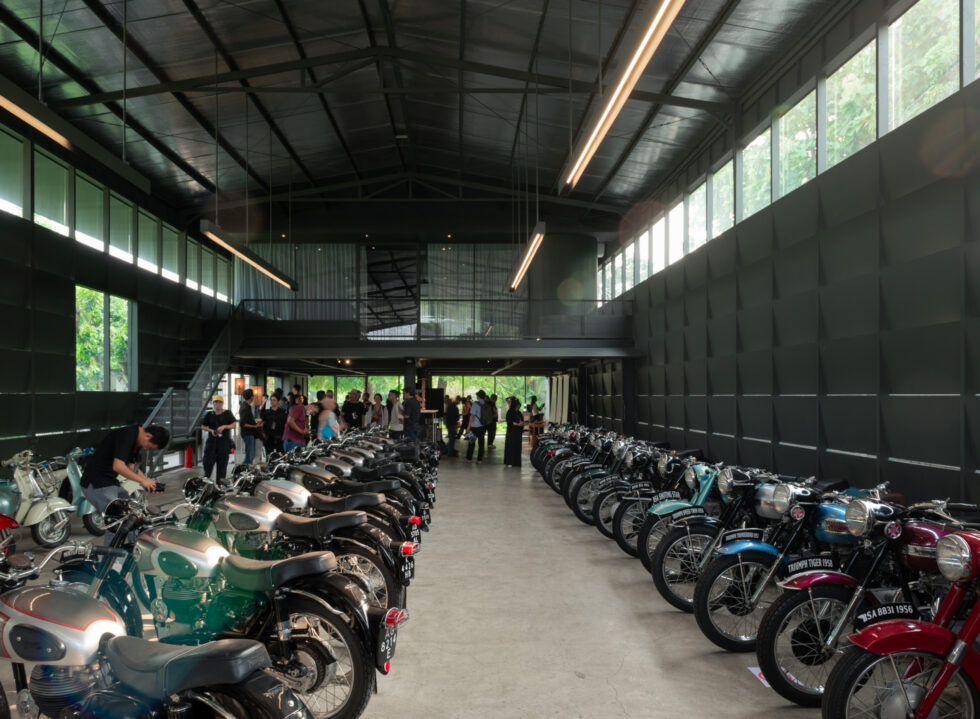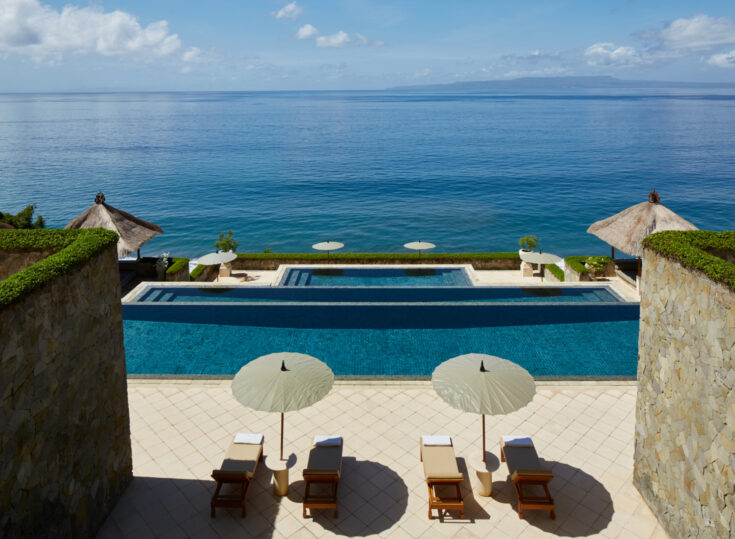The sunlight bore down heavily upon visitors at the opening ceremony of Bintaro Design District (BDD) 2023 in the suburban neighbourhood known as Manyar. It’s a stark contrast to the typical October weather, which enveloped last year’s event in frequent heavy rainfall—immediately bringing home the global rising temperature crisis that sparked this year’s ‘Envisioning Nature’ theme.
“The climate issue has always been on my mind, but it was a visit to Sri Lanka in 2012 that sharpened my perspective,” shared award-winning architect Andra Matin, sitting alongside fellow curators and architects Budi Pradono and Danny Wicaksono as well as graphic designer Hermawan Tanzil of Leboye. “It stood out to me how instead of trying to quell the heat with air conditioning, a lot of Sri Lankans adjusted their daily wear instead by adopting cooler materials like linen. That made me realise that if we want to feel closer to nature, then we are the ones who have to adjust to it as its tenants.”
Spanning across Bintaro and neighbouring areas from 8 to 18 November, the event sees up to 70 participants exhibiting their own take on building a renewed, healthier relationship with nature through public installations, open architecture, talk shows and workshops. Not just in form, perspectives vary too, bringing in ideas that are not only limited to the local neighbourhood.
Material explorations set the tone for much of the event, with known players in the creative industry such as Kick Your Butt Project—who naturally brought their trademarked cigarette butts biopolymer, Cella Flake, that has been transformed into multipurpose trays to the exhibition space at Garasi Mawi—demonstrating the ways alternative materials, particularly from waste, can establish circularity and sustainability in the long run.
Circular Cotton Factory from Japan, a renowned organisation that has been utilising the country’s clear waters to process cotton waste into paper since 1995, showcases the versatility of the material by transforming it into flower sculptures, installations and multicoloured bowls displayed at T-Space. On the rooftop of the same building, Yogyakarta-based Pring Studio looks back into the region’s history and employs bamboo for its furniture collection, a decision that was based on the fact that the shoots have shorter life spans than trees and would benefit from getting cut down upon reaching its maturity (else, they let out carbon dioxide as they decay).
Adding variety into the mix, there’s ‘Puzzle House’ in Garasi Mawi by 11-year-old Devan Fagan Arganta, the youngest participant to have entered the event since its inception four years ago. He expresses his vision of a nature-first future through a wheel-shaped modular mobile house concept that can adapt to its environment (come flood or earthquake), addressing deforestation and energy consumption issues.
The idea of connecting with nature also stretched into community-based initiatives such as Seliku Langkah‘s ‘Cat Pavilion’; shaped like giant, reflective cardboard boxes, entering into one is to step into the shoes—or more accurately, paws—of cats with its cramped quarters and feather toys dangling from the ceiling. The installation at the small park behind Kopi Manyar is both a reflection of people’s care for their pet cats and a plea to treat stray ones with the same consideration.
While inside Kopi Manyar itself, a heartfelt tribute to one’s neighbourhood community is captured in Andra Matin, Artiandi Akbar and Andri Rahmat’s ‘Sekitar Manyar’. Videos, writings and snapshots of seemingly mundane daily scenes—pasted on cardboard frames that hang on thin wires—unfold a glimpse into life around the Manyar neighbourhood, from the cats that populate Andra Matin’s residence to the gentle raindrops that create small splashes on the café’s pool water.
Though spread out in forms, interpretations and locations, there’s a unity to the occasion that can be felt from the exchange of curious inquiries and perspectives that would spontaneously take place among participants and visitors alike, prompted by the works on display. As Danny aptly described it, it’s like a ‘hajatan‘ or celebratory gathering of design.
“As a designer myself, I look forward to BDD,” Hermawan chimed in. “There’s a rare sense of togetherness here, that of gotong royong (communal work). The help and hard work of the community is what made the event possible. Four years running, our hope is for BDD, and the small initiatives and movements it prompts, to continue to have a lasting impact on the community.”
Bintaro Design District 2023 ‘Envisioning Nature’ will run until 18 November 2023 across Bintaro and neighbouring areas. For more details and booking information, click here.
